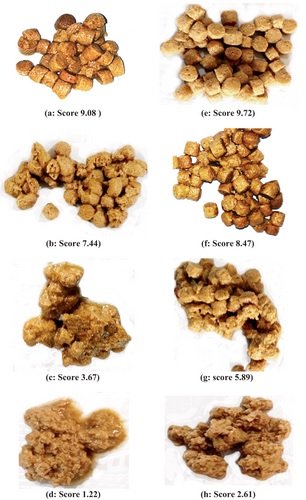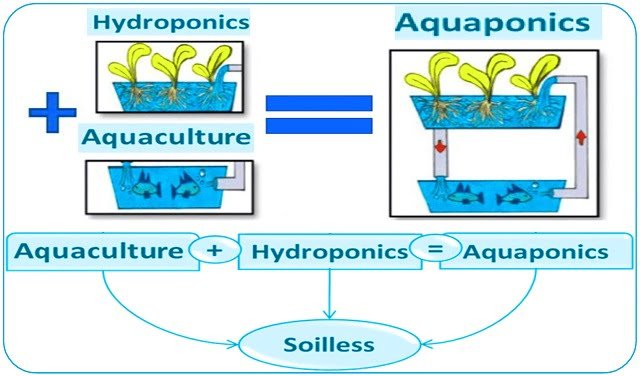
In recent decades, extrusion technology has emerged as a key method for producing aquafeeds that are not only nutritious but also highly functional, offering benefits such as improved digestibility, palatability, buoyancy, and water stability.
A study published by scientists from CSIRO Agriculture and Food, the Food Innovation Centre, and Deakin University delves into the mechanisms, challenges, and opportunities associated with aquafeed extrusion. The study explores how extrusion technology has revolutionized aquaculture feed production, the challenges it faces, and future opportunities that could further enhance its efficiency and sustainability.
What is aquafeed extrusion?
Extrusion is a high-temperature, short-time process that uses heat, pressure, and mechanical shear to transform raw ingredients into a homogeneous, porous, and nutrient-rich feed product. This method was first adopted in the 1980s and has since become the dominant feed production method for many fish species, particularly those requiring high-energy, slow-sinking feeds like salmon.
The extrusion process
The extrusion process is complex and influenced by several factors:
- Feed mixture composition: Includes proteins, starch, fiber, lipids, pigments, vitamins, and moisture.
- Extrusion parameters: Include screw speed, temperature profile, feed rate, screw configuration, and die design.
- Preconditioning: The addition of water and heat facilitates water diffusion into starch granules, initiating the starch plasticization process for partial starch cooking (gelatinization).
Why extrusion is superior to traditional pelletization
While pelletization has been the traditional method for producing aquafeeds, the study published in Reviews in Aquaculture highlights several advantages of extrusion:
- Improved nutrient retention: Extrusion enhances the digestibility of proteins and starches, making nutrients more accessible to fish.
- Controlled buoyancy: Extrusion allows precise control over pellet density, enabling the production of floating, slow-sinking, or fast-sinking feeds tailored to the feeding behavior of different species.
- Better water stability: Extruded pellets are more durable in water, reducing nutrient leaching and environmental impact.
- Higher oil-loading capacity: Extruded feeds can absorb more lipids, which is crucial for high-energy diets.
However, extrusion is not without its challenges. The process is more complex and costly than pelletization, requiring significant capital investment and technical expertise. Additionally, the high temperatures involved can degrade heat-sensitive nutrients, such as vitamins, necessitating strategies like post-extrusion coating or encapsulation.
Key challenges in aquafeed extrusion
- Ingredient variability: The physical and nutritional properties of raw materials can vary widely, affecting product consistency and quality. This variability requires frequent adjustments to extrusion parameters, increasing operational complexity.
- Operational complexity: Extrusion is a highly technical process requiring skilled operators to manage variables such as temperature, moisture content, and screw speed. Any misstep can result in suboptimal feed quality.
- Production costs: The initial investment in extrusion equipment is 1.5 to 2.5 times higher than for pellet mills. Additionally, energy requirements and maintenance costs are significantly greater.
- Heat-sensitive nutrients: High extrusion temperatures can degrade vitamins and other heat-sensitive components, reducing the nutritional value of the feed. This challenge has led to the exploration of encapsulation techniques and cold extrusion.
- Waste management: Extruded feed production generates waste in the form of fines and fragments. While some waste can be recycled, excess waste can lead to economic losses and environmental concerns.
Opportunities for innovation in aquafeed extrusion
Despite these challenges, several exciting opportunities exist to advance aquafeed extrusion technology:
- Predictive characterization with NIRS
Near-Infrared Spectroscopy (NIRS) is emerging as a powerful tool for real-time analysis of feed composition and quality. NIRS can predict key attributes such as starch gelatinization, nutrient digestibility, and pellet durability, enabling more efficient process control and quality assurance. - AI-driven quality control
Artificial Intelligence (AI) has the potential to revolutionize aquafeed production by optimizing extrusion parameters in real time. AI systems can monitor critical variables, detect anomalies, and make adjustments to ensure consistent product quality, reducing waste and downtime. - Encapsulation of bioactives
Encapsulation technology can protect heat-sensitive nutrients and bioactive compounds during extrusion, ensuring their stability and bioavailability in the final feed. This approach is particularly promising for functional feeds that promote fish health and resilience. - Extrusion modeling
Advanced modeling techniques, such as Response Surface Methodology (RSM), can help optimize extrusion conditions for different feed formulations. These models allow manufacturers to predict the effects of varying processing parameters on feed quality, enabling more efficient production. - Sustainable ingredients
The aquaculture industry is increasingly exploring alternative protein sources such as insect meal, single-cell proteins, and algae. Extrusion technology can enhance the functionality of these novel ingredients, making them more viable for use in aquafeeds.
The future of aquafeed extrusion
According to the study, the future of aquafeed extrusion lies in addressing ingredient variability, operational complexity, and sustainability while leveraging emerging technologies such as AI, NIRS, and encapsulation. Collaboration between industry, academia, and research institutions will be crucial in driving innovation and ensuring the continued growth of sustainable aquaculture.
Stay Always Informed
Join our communities to instantly receive the most important news, reports, and analysis from the aquaculture industry.
Conclusion
Aquafeed extrusion is a cornerstone of modern aquaculture, offering significant advantages over traditional pelletization in terms of nutrient retention, feed efficiency, and environmental impact. However, the process faces challenges related to cost, complexity, and ingredient variability. By embracing emerging technologies and sustainable practices, the aquaculture industry can overcome these challenges and unlock the full potential of extrusion technology.
Looking ahead, the continued evolution of aquafeed extrusion will be essential for ensuring the productivity, sustainability, and economic viability of aquaculture systems worldwide.
Contact
Jordan Pennells
CSIRO Agriculture and Food, Food Innovation Centre
Werribee, Victoria, Australia
Email: jordan.pennells@csiro.au
Reference (open access)
Pennells, J., Salini, M., Rombenso, A., Simon, C., & Ying, D. (2025). The State-of-the-Art of Aquafeed Extrusion: Mechanisms, Challenges and Opportunities. Reviews in Aquaculture, 17(2), e70002. https://doi.org/10.1111/raq.70002
Editor at the digital magazine AquaHoy. He holds a degree in Aquaculture Biology from the National University of Santa (UNS) and a Master’s degree in Science and Innovation Management from the Polytechnic University of Valencia, with postgraduate diplomas in Business Innovation and Innovation Management. He possesses extensive experience in the aquaculture and fisheries sector, having led the Fisheries Innovation Unit of the National Program for Innovation in Fisheries and Aquaculture (PNIPA). He has served as a senior consultant in technology watch, an innovation project formulator and advisor, and a lecturer at UNS. He is a member of the Peruvian College of Biologists and was recognized by the World Aquaculture Society (WAS) in 2016 for his contribution to aquaculture.




